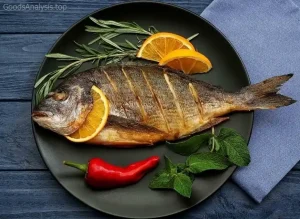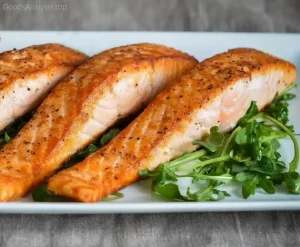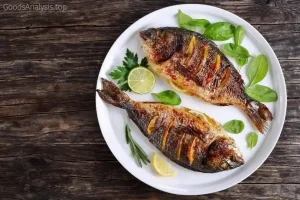Cooking fish is one of those timeless kitchen skills that can easily elevate your meals from mundane to mouth-watering. Whether you’re an experienced home chef or just starting to experiment with seafood, understanding how to prepare and cook fish properly is key to achieving delicious, healthy results every time. This guide will provide you with all the essential information you need, from selecting the best fish to using the right cooking methods, as well as a few tips and tricks along the way.
Why Fish?
Fish is often considered a healthier protein choice compared to meat. It’s packed with lean protein, heart-healthy omega-3 fatty acids, and essential vitamins and minerals. In fact, research has shown that regular consumption of fish, particularly fatty varieties like salmon, sardines, and mackerel, can help reduce the risk of heart disease, support brain health, and even improve your mood. But despite all these benefits, cooking fish can be intimidating for some people.
Fear not—whether you’re working with fresh or frozen fish, and regardless of whether it’s fillets, steaks, or whole, cooking fish can be quick, easy, and extremely rewarding. Let’s dive into the best ways to cook fish.
Selecting the Right Fish
Before you even think about cooking, you need to pick the right fish. Freshness is key—the best fish for cooking is the one that has been stored and handled properly. Here are some things to look for when selecting your fish:

- Smell: Fresh fish should have a clean, ocean-like smell. If it smells overly fishy or off-putting, it’s a sign it’s past its prime.
- Eyes: The eyes should be clear and shiny, not sunken or cloudy.
- Gills: They should be bright red or pink, not brown or slimy.
- Flesh: The flesh should be firm to the touch and spring back when pressed. Avoid fish that feels mushy or has discolored patches.
If you’re purchasing frozen fish, make sure it’s frozen solid and has no freezer burn or excessive ice around it. As for sustainability, it’s always best to choose fish that’s responsibly sourced. The Marine Stewardship Council (MSC) and the Aquaculture Stewardship Council (ASC) provide certifications that can guide you in making eco-friendly choices.
Methods of Cooking Fish
Fish is versatile, and there are many ways to cook it, each bringing out different flavors and textures. Below are some of the most popular methods, along with tips on how to execute them perfectly.
1. Baking

Baking fish is one of the easiest and healthiest ways to cook it. It requires minimal preparation and lets the natural flavors shine. Here’s a simple method for baking fish:
- Preheat your oven to 375°F (190°C).
- Season the fish: Sprinkle with salt, pepper, and any herbs or spices you prefer. A drizzle of olive oil or a pat of butter can add richness.
- Wrap it in foil or parchment paper: This creates a steam effect, keeping the fish moist.
- Bake for about 12-15 minutes, depending on thickness. Fish is done when it flakes easily with a fork.
Tip: Add lemon slices or fresh herbs like thyme, dill, or parsley to the foil for extra flavor.
2. Grilling
Grilling fish imparts a smoky, charred flavor that’s hard to beat, especially for heartier types like tuna, swordfish, or salmon.
- Preheat the grill to medium-high heat.
- Oil the fish and the grill grates to prevent sticking.
- Grill fish for about 3-4 minutes per side, depending on thickness. A fish grill basket or foil packet can help keep delicate fish from falling apart.

Tip: Marinating fish for an hour before grilling can enhance its flavor and prevent it from drying out.
3. Pan-Seared
Pan-searing is great for achieving a crispy, golden exterior while keeping the inside moist. It’s perfect for thinner fish like cod, tilapia, or trout.
- Heat a non-stick or cast iron skillet with some oil over medium-high heat.
- Season the fish and place it in the skillet, skin-side down if applicable.
- Cook for about 2-4 minutes per side, depending on the thickness of the fish. The goal is to develop a crispy crust without overcooking the interior.
Tip: For a buttery finish, you can baste the fish with melted butter, garlic, and herbs during the last minute of cooking.
4. Poaching
Poaching is a gentle method of cooking fish in simmering liquid, which keeps it tender and moist. It’s great for delicate fish like sole or flounder.

- Heat a liquid, such as water, broth, or wine, in a pan until it’s simmering, not boiling.
- Add the fish and simmer gently for about 8-10 minutes, depending on the thickness.
- Check for doneness: The fish should flake easily with a fork.
Tip: Poaching liquid can be flavored with aromatics like onion, garlic, and bay leaves to infuse the fish with subtle flavors.
5. Steaming
Steaming is another healthy method for cooking fish, as it preserves its nutrients while producing a moist and tender result.
- Fill a pot with a couple of inches of water and bring it to a simmer.
- Place the fish in a steamer basket or on a heatproof plate, then cover.
- Steam for 8-12 minutes, depending on the size of the fish.
Tip: To add flavor, you can steam the fish over herbs or citrus slices, or even in a broth.

Common Mistakes to Avoid When Cooking Fish
- Overcooking: Fish cooks very quickly and can become dry and tough if overcooked. A good rule of thumb is to cook fish for about 10 minutes per inch of thickness.
- Not letting the fish rest: After cooking, let the fish rest for a couple of minutes. This allows the juices to redistribute.
- Using the wrong pan: If you’re pan-searing, opt for a non-stick or cast-iron skillet to avoid sticking.
- Neglecting seasoning: Fish benefits from seasoning, especially with herbs, citrus, or even a splash of wine.
Some Final Thoughts
Fish is an incredible, healthy food choice that can be a centerpiece of many delicious meals. However, it requires some attention to detail, from selecting the right fish to using the proper cooking method. With a little practice, you’ll soon be cooking fish like a pro.
Remember, while cooking fish can seem intimidating at first, it’s a highly rewarding experience. The key is to keep it simple, respect the natural flavors of the fish, and experiment with different methods and seasonings. And, if you ever have doubts or questions, there are plenty of experts and cooking resources out there to help guide you along the way.

What People Are Saying About Cooking Fish
- James (57, USA): “I’ve been cooking fish for years, but I used to be terrified of overcooking it. Once I learned how to sear fish properly, though, it really changed the game for me. My favorite? Pan-seared salmon with garlic butter. So simple, but amazing.”
- Marie (34, France): “I love poaching fish in a white wine broth. The delicate flavors it brings out are fantastic. Plus, it’s an easy way to keep it moist without overdoing it. I always use fresh herbs—basil, tarragon, or thyme.”
- Nguyen (43, Vietnam): “In Vietnam, steaming fish is really common. We often steam it with ginger and lemongrass. The flavors are so fresh and clean. My kids love it too, which is a huge bonus!”
- Olivia (28, UK): “As a busy young professional, grilling fish is my go-to. It’s quick, and you can make it with almost anything you’ve got in the fridge—lemon, olive oil, maybe some capers. Done in 15 minutes!”
- Luca (60, Italy): “I prefer baking my fish with a little olive oil, garlic, and rosemary. It’s simple, but the flavors are incredible. In Italy, we take our time with food, and I love using that time to appreciate the quality of the fish.”
In conclusion, cooking fish can be as simple or as complex as you want it to be, but with the right approach, it’s always a satisfying experience. So, don’t be afraid to get in the kitchen, experiment with different methods, and most importantly—enjoy your delicious fish!









